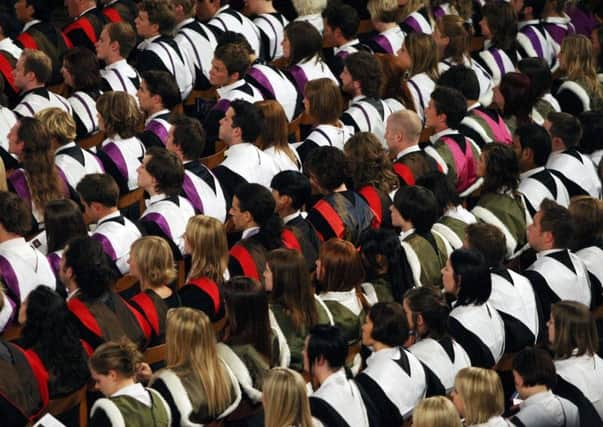Gulf in university places is revealed


On average, around one in five youngsters born in England’s poorest postcodes go on to higher education, compared to around half of those from homes in the wealthiest postcodes.
The new study, by education charity Teach First and the Credit Suisse EMEA Foundation, argues that poorer youngsters are still facing hurdles that their richer peers do not have to overcome, and calls for more action to boost the numbers of disadvantaged young people going on to study for a degree.
Advertisement
Hide AdAdvertisement
Hide AdThe findings come just days before teenagers receive their A-level results and learn if they have scored the grades they need for entry to their chosen degree course.
Using available data on university rates and socio-economic backgrounds, the study calculates that in some Yorkshire postcodes, such as parts of Hull, just over eight per cent of youngsters go to university, whereas in other areas in the region, such as parts of Harrogate, the figure is as high as more than 70 per cent.
The figures also reveal huge disparities across towns and cities in Yorkshire.
Just 9.5 per cent of young people living in the Hunslet area of Leeds go to university, whereas in Roundhay almost 55 per cent of youngsters go on to attend.
Advertisement
Hide AdAdvertisement
Hide AdIn parts of Derbyshire, as few as one in 20 youngsters go to university, whereas in other areas,
such as parts of Buckinghamshire, this figure is as high as over 80 per cent.
This means that those born in some of the richest areas of England are up to 18 times more likely to attend university than those in some of the most deprived places, it says.
A poll of around 2,000 young people in England conducted as part of the research, including current university students and graduates, found that of the most advantaged students surveyed, 41 per cent said they chose their university because it was the best for what they wanted to study, compared to 31 per cent of the least advantaged.
Advertisement
Hide AdAdvertisement
Hide AdDisadvantaged students were more likely to base their decision on location, with 42 per cent picking a place because they liked the town, compared to 37 per cent of their wealthiest peers, while 29 per cent chose an institution close to their own, compared to 24 per cent of the most advantaged youngsters.
Disadvantaged pupils were also more likely to decide on a university because their friends were going there.
The study notes that universities and colleges have spent hundreds of millions of pounds on improving access to higher education, but argues that this money must be better targeted at “hard to reach” communities and young pupils.
It suggests the Government should write off a proportion of student loans for teachers who commit to working in challenging areas, and every school should have a clear careers strategy.
Advertisement
Hide AdAdvertisement
Hide AdTeach First chief executive Brett Wigdortz said: “There are still far too few disadvantaged pupils getting to university and completing their degree. They’re simply not given the same chance to reach their full potential, with less access to brilliant teaching and less guidance on how they can turn their aspirations into reality.” Universities minister Jo Johnson said that recent UCAS data shows disadvantaged pupils are more likely to go to university than ever before.
“Our higher education reforms will ensure universities look beyond just access - and focus on attainment, retention rates and readiness for the world of work,” he said.